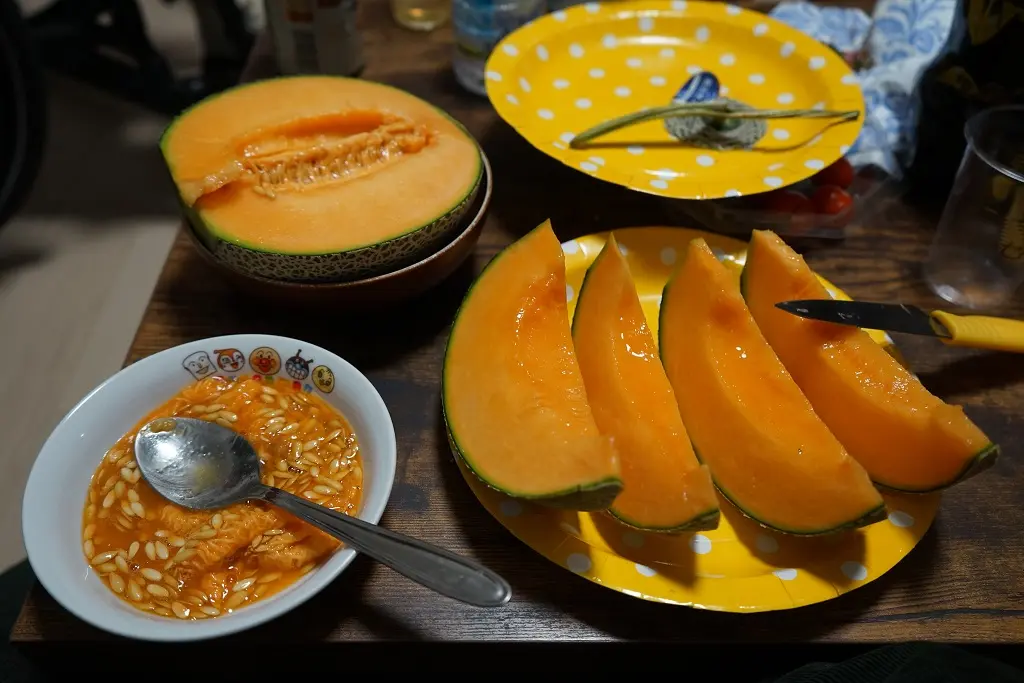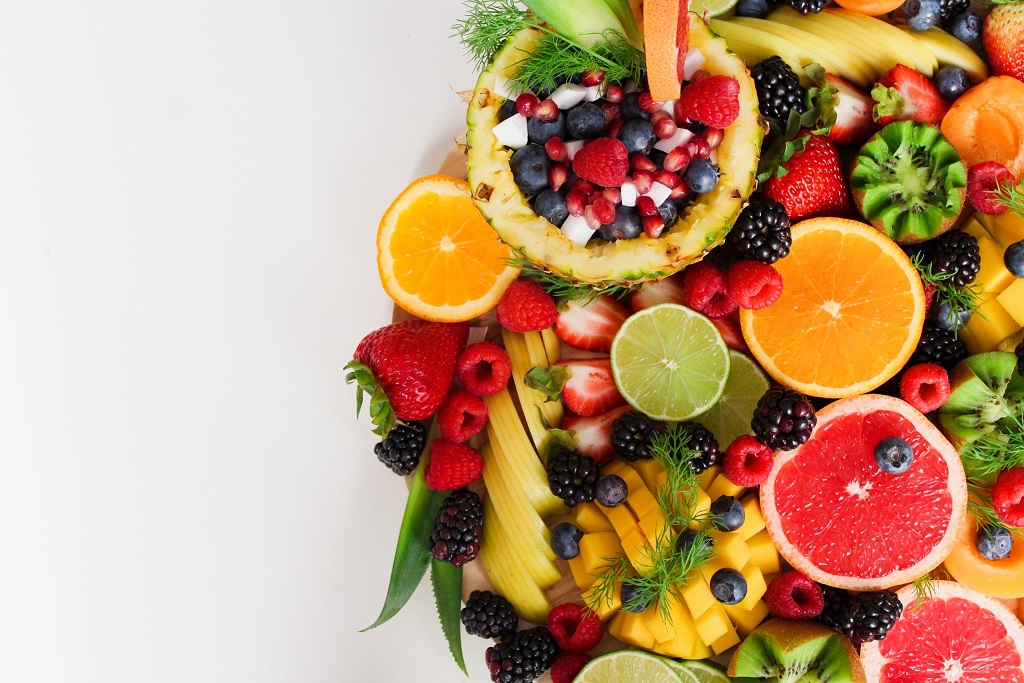The Strangest And Most Expensive Types Of Fruits Around The World
Fruits Are An Essential Part Of Our Diet, Providing Us With Essential Nutrients And Vitamins.
However, Some Fruits Are Considered To Be Quite Strange And Expensive Due To Their Unique Characteristics And Limited Availability.
These Fruits Are Often Highly Sought After By Collectors And Connoisseurs, And Can Fetch Exorbitant Prices At Auction Or In Specialty Stores.
In This Article, We Will Explore Some Of The Strangest And Most Expensive Types Of Fruits From Around The World, And Delve Into The Reasons Why They Are So Highly Valued.
Some Of The Most Expensive Fruits In The World Include
Yubari King Melons From Japan:
Yubari King Melons Are A Type Of Cantaloupe Grown In Yubari, Japan.
They Are Considered A Luxury Fruit And Are Known For Their Sweet And Juicy Flesh.
They Are Often Given As Gifts And Can Be Quite Expensive, With Prices Sometimes Reaching Several Thousand Dollars For A Single Melon.
They Are Typically Harvested In The Spring And Are Considered A Delicacy In Japan.

Densuke Black Watermelons From Japan:
Which Are Extremely Rare And Can Sell For Over $6,000 Each, Ensuke Black Watermelons Are A Type Of Black-skinned Watermelon That Is Grown In The Small City Of Ensukot In Japan.
They Are Known For Their Dark, Almost Black, Skin, Which Is A Result Of The Unique Growing Methods Used By Farmers.
These Watermelons Are Considered A Luxury Product And Are Known For Their Sweetness And Juiciness.
They Are Typically Harvested In The Summer And Are Considered A Delicacy In Japan.
They Are Also Considered As An Unique Item In Japan And Can Be Sold At Premium Prices.
Square Watermelons From Japan:
Square Watermelons Are A Unique Variety Of Watermelon That Is Grown In Japan.
They Are Grown In Square Or Rectangular Shaped Boxes While The Watermelon Is Still Developing, Which Gives It Its Unique Shape.
This Method Is Mainly Used For Aesthetic Reasons, As The Square Shape Makes The Watermelon Easier To Stack And Store.
They Are Not Genetically Modified, But Grown In Square Or Rectangular Shaped Boxes While They Are Still Growing, Which Causes The Watermelon To Take On The Shape Of The Box.
Square Watermelons Are Considered A Luxury Item And Are Often Given As Gifts In Japan.
They Are Typically Harvested In The Summer, And Are Sold At A Premium Price Than The Normal Round Watermelons.
Pineapples From The Philippines:
Which Are Grown In A Special Way Called “Pineapple Plantation” And Can Sell For More Than $150 Each, Square Watermelons Are A Unique Variety Of Watermelon That Is Grown In Japan.
They Are Grown In Square Or Rectangular Shaped Boxes While The Watermelon Is Still Developing, Which Gives It Its Unique Shape.
This Method Is Mainly Used For Aesthetic Reasons, As The Square Shape Makes The Watermelon Easier To Stack And Store.
They Are Not Genetically Modified, But Grown In Square Or Rectangular Shaped Boxes While They Are Still Growing, Which Causes The Watermelon To Take On The Shape Of The Box.
Square Watermelons Are Considered A Luxury Item And Are Often Given As Gifts In Japan.
They Are Typically Harvested In The Summer, And Are Sold At A Premium Price Than The Normal Round Watermelons.
Buddha-shaped Pears From China:
Which Are Grown To Resemble The Shape Of A Buddha And Can Sell For Up To $100black Sapote, Buddha-shaped Pears From China Are A Type Of Pear That Are Grown And Shaped In A Specific Way To Resemble The Shape Of A Buddha Statue.
They Are Grown Using A Technique Called “Fruit Shaping,” Which Involves Growing The Pear Inside A Mold That Is Shaped Like A Buddha.
The Technique Is Said To Have Originated In China, And The Pears Are Considered A Delicacy And Are Often Given As Gifts.
They Are Not Genetically Modified, But They Are Grown Using Specific Techniques To Get The Final Shape Of The Pear.
Dragon Fruit,Dragon Fruit, Also Known As Pitaya Or Strawberry Pear, Is A Tropical Fruit That Is Native To Central And South America.
It Is A Member Of The Cactus Family And Is Characterized By Its Bright Pink Or Red Skin And Green Scales.
The Flesh Of The Fruit Is White Or Red And Contains Small Black Seeds.
Dragon Fruit Is A Good Source Of Antioxidants, Vitamin C, And Fiber.
It Is Typically Eaten Fresh, Either On Its Own Or In Fruit Salads, And Can Also Be Used To Make Juice Or As A Topping For Yogurt And Ice Cream.
The Fruit Is Also Popular In Southeast Asia, And China Is The World’s Largest Producer Of Dragon Fruit.
Longan:
Longan Is A Tropical Fruit That Is Native To China And Southeast Asia.
It Is Also Known As “Dragon Eye” Fruit Because Of Its Resemblance To An Eyeball When The Fruit Is Shelled.
The Fruit Is Small, Round, And Has A Brown, Rough-textured Skin.
The Flesh Of The Fruit Is White And Translucent, With A Texture Similar To A Grape, And A Single Seed In The Center.
Longans Are Sweeter And Less Acidic Than Lychees, Another Fruit That Is Closely Related.
They Are Typically Eaten Fresh, But Can Also Be Dried And Used In Herbal Teas, Desserts, And Sweet-and-sour Dishes.
Longans Are Rich In Vitamin C And Other Nutrients.
Star Fruit: Also Known As Carambola, Is A Tropical Fruit That Is Native To Southeast Asia And Is Popular In Many Tropical Countries.
It Is Known For Its Unique Star Shape When Cut Crosswise.
The Skin Of The Fruit Is Thin And Yellow-green In Color.
The Flesh Is Juicy, Sweet, And Tart, With A Slightly Crunchy Texture.
Star Fruits Are Usually Eaten Fresh As A Snack, But It Can Also Be Used In Salads, Drinks, And As A Garnish.
The Fruit Is A Good Source Of Vitamin C, Antioxidants And Dietary Fiber.
It’s Worth Noting That People Who Have Kidney Problems Should Avoid Eating Star Fruit As It Can Cause Damage To The Kidneys If Consumed In Large Quantities.
Ugli Fruit Is A Type Of Hybrid Citrus Fruit That Is A Cross Between A Grapefruit, An Orange, And A Tangerine.
It Is Native To Jamaica, And It Gets Its Name From Its Unattractive, Bumpy, And Wrinkled Exterior.
The Fruit Has A Thick, Yellow-green Skin And A Juicy, Sweet-tart Flesh That Is A Combination Of The Flavors Of Its Parent Fruits.
Ugli Fruit Is Typically Eaten Fresh, Either On Its Own Or In Fruit Salads, But It Can Also Be Used To Make Juice Or Marmalade.
It Is A Good Source Of Vitamin C, Folate, And Other Essential Vitamins And Minerals.
One Of The Benefits Of Ugli Fruit Is That It Is Typically Less Bitter Than Grapefruit, Making It More Palatable To Those Who Find Grapefruit Too Sour.
Also, It’s Easy To Peel And Segment, It’s Seedless, And It Has A Longer Shelf Life Than Many Other Citrus Fruits.
Reasons For The Value Of The Strangest And Most Expensive Fruits Around The World
The Value Of The Strangest And Most Expensive Fruits Around The World Can Be Attributed To A Variety Of Factors, Including:
Rarity:
Many Of The Fruits, Such As Yubari King Melons And Densuke Black Watermelons, Are Extremely Rare And Difficult To Grow, Which Makes Them Highly Sought After And Valuable.
Labor Intensive:
Fruits Like Pineapples Grown In The Special Way Called “Pineapple Plantation” Are Labor Intensive And Require A Lot Of Care And Attention To Grow, Which Contributes To Their High Cost.
Geographic Location:
Some Fruits, Such As Buddha-shaped Pears From China, Are Grown In Specific Regions And Are Only Available Locally, Which Can Make Them More Expensive To Import.
Branding And Marketing:
Fruits Like Square Watermelons From Japan, Are Grown In Square Shape Box To Make Them Easy To Stack And Store, This Unique Characteristic, Makes Them More Expensive Due To Branding And Marketing.
High Demand:
Some Fruits, Such As Durian And Mangosteen, Have A Strong Following And Are Highly Sought After By Consumers, Which Drives Up Their Price.
Cultural Significance:
Some Fruits, Like Buddha-shaped Pears And Yubari King Melons, Have Cultural Significance In The Regions Where They Are Grown And Are Often Given As Gifts, Adding To Their Value.
Climate And Weather:
Some Fruits Like Yubari King Melons And Densuke Black Watermelons, Require Specific Weather Conditions In Order To Grow Properly, Which Can Affect The Yield And Availability.
The Fruits That Are Grown In Harsh Or Limited Climate Conditions Are Usually Rarer And More Expensive.
Seasonal Availability:
Some Fruits, Such As Buddha-shaped Pears, Have A Limited Growing Season, Which Makes Them Only Available At Certain Times Of The Year.
This Increases The Value Of The Fruit, As It Is Not Always Readily Available.
Unique Taste And Quality:
Some Fruits, Like Ugli Fruit, Have A Unique Taste And Quality That Sets Them Apart From Other Fruits.
Their Unique Characteristics, Make Them More Valuable To Consumers And Can Command A Higher Price.
Marketing And Advertising:
Some Fruits, Like Yubari King Melons, Are Heavily Marketed And Advertised As Luxury Items, Which Can Increase Their Perceived Value And Make Them More Expensive.
Packaging And Presentation:
Some Fruits, Like Yubari King Melons, Are Packaged And Presented In A Luxurious Manner, Which Contributes To Their High Cost.
Celebrity Endorsement:
Some Fruits, Like Yubari King Melons, Have Been Endorsed By Celebrities, Which Can Increase Their Perceived Value And Make Them More Expensive.
In Conclusion, There Are Many Fruits Around The World That Are Considered Strange And/or Expensive, Such As Durian, Yubari King Melons, Rarest Mangosteen, Square Watermelons, And Black Sapote. These Fruits Are Considered Delicacies And Can Sell For High Prices Due To Their Unique Tastes, Textures, And Growing Conditions.
EXCEllent